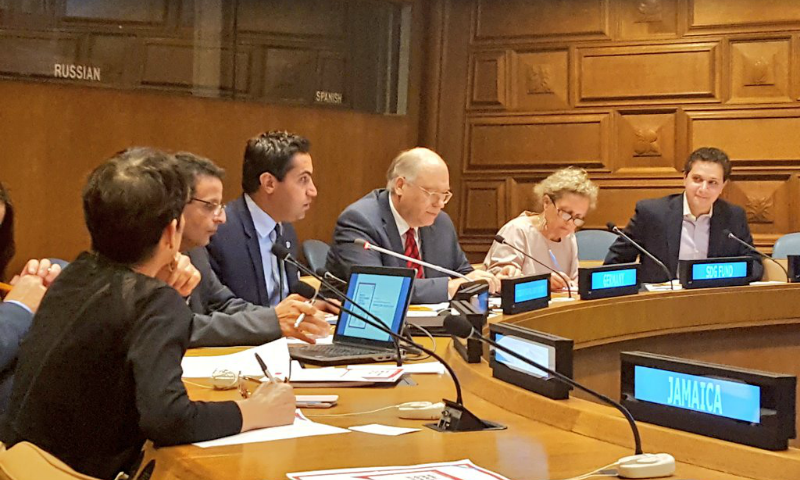
After years of improvement, youth unemployment is set to rise in 2016. According to the International Labour Organization (ILO), the global youth unemployment rate will reach 13.1 per cent in 2016 and remain at that level through to 2017. As a result, the global number of unemployed youth is set to reach 71 million.
These figures and trends were presented at a briefing on the ILO’s “World Employment and Social Outlook 2016: Trends for Youth” held on 6 September 2016 at UN Headquarters in New York. Organised by the ILO in cooperation with the Permanent Missions of Germany and Morocco to the United Nations, the event featured a panel of experts who discussed concrete solutions to improve outcomes for youth, which is fundamental to building inclusive and sustainable societies.
ILO Special Representative Vinicius Pinheiro spoke of the poor quality of employment and unequal opportunities for young women and men around the world. Of greater concern, he stressed, is the share of young people, often in emerging and developing countries, who live in extreme or moderate poverty despite having a job. In fact, 37.7 per cent of working youth are in extreme or moderate poverty, equivalent to 156 million people. Persistent gender gaps undermine social progress, as the labour force participation rate for young men stands at 53.9 per cent, compared to 37.3 per cent for young women, representing a gap of 16.6 percentage points. Mr. Pinheiro also discussed an upcoming worldwide ILO consultation on the future of work, which will stand at the centre of activities to mark the organisation’s 100th anniversary in 2019.
Other panelists discussed the role of the private sector, from small and medium-sized enterprises (SMEs) to multinational corporations, in tackling youth unemployment challenges at the local and national levels. Ronnie Goldberg, a senior counsellor to the United States Council for International Business (USCIB), emphasised that most jobs will be produced in the private sector by SMEs at the local level, so governments must develop policies that support economic growth and stability, and encourage entrepreneurship. Ms. Goldberg mentioned the Global Apprenticeship Network (GAN) and the GAN National Networks as mechanisms to encourage companies to create traineeships for young people and exchange experiences and best practices. Paloma Duran, Director of the Sustainable Development Goals Fund (SDG-F) discussed the fund’s Private Sector Advisory Group, which provides guidance and strategic support to achieve better development results in coordination with the private sector. Ms. Duran talked about the group’s project in Kaduna, Nigeria, that will create a facility to provide agricultural training for local youth and enable them to commercialise and sell their products to local businesses.
While there is a tendency to blame various groups and institutions for the youth unemployment crisis, there is no panacea to addressing these issues. This underlines the need to promote stronger cooperation and coherence in developing policies and programmes that combat decent work deficits for youth, address poverty and inequality and equip youth with the means to achieve a more equitable and prosperous future. To keep the central promise of the 2030 Agenda for Sustainable Development and ensure that no one is left behind, there must be renewed and sustained efforts to place young people and poverty eradication at the centre of the Sustainable Development Agenda.
Read the ILO’s “World Employment and Social Outlook 2016: Trends for Youth”.
Learn more about our work on youth at social.un.org/youth
Source & Copyright: UNDESA DSPD
 Welcome to the United Nations
Welcome to the United Nations